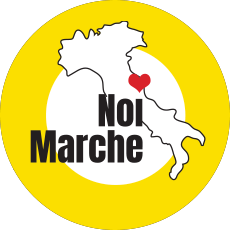The village
Located in the centre of the region of Marche, Cupramontana occupies a strategic position for For those coming boh from the seaside or the mountains, halfway between Ancona and the Umbrian border.
With its height and a very wide view on a territory ranging from the pre-Apennine mountains to the Adriatic Sea, Cupramontana welcomes visitors in all its might.
Diving up to the top of the hill, you can observe the soft lines of the agricultural landscape surrounding the town, and so you can easily realize that the precious fertile land has always been an essential element of Cupramontana.
Cupramontana received its name from the Goddess Cupra, the goddess of fertility and beauty adored by the pre-Roman population of the Piceni.
then Cupramontana became an important Roman municipality. In the Lombard period it was part of the Duchy of Spoleto-Camerino changing its name to Massaccio. Only with the Unification of Italy, the return to the ancient name was authorized..
Strolling
The walk in the historic center of Cupramontana starts from the elegant church of San Lorenzo, in neoclassical style designed by Mattia Capponi. Inside you can see the columns with Corinthian capitals, stucco rosettes and paintings. We then arrive in Piazza IV Novembre, the heart of Cupramontana, which overlooks several houses, ancient buildings and the church of San Leonardo dating back to 1760. The outside church of San Leonardo has four niches where as many statues are housed. Inside you can see a silver cross from the 15th century, the circumcision of Antonio Sarti of Jesi in 1615 and wooden works by Andrea Scoccianti. Leaving the church we take the alley that in a few minutes leads us in front of the Caves of the Monastery of Santa Caterina, today Musei in Grotta (M.I.G). Here, various exhibition spaces of the Cuprense winemaking tradition have been created: “The road of taste”, a path that allows, through the flavors and traditions, to get to know the peculiarities of various local companies; the "Enocupra", the municipal wine shop equipped both for tasting local wines and for purchasing them; the "Horto dei Semplici", a medieval garden where native wild herbs and medicinal plants are grown; the "International Wine Label Museum" which houses an original collection of wine labels from all over the world, including rare pieces from the 19th century and hundreds of sketches by famous artists. Continuing our walk along the walls we come across the Town Hall, the work of the architect Mattia Capponi. The neoclassical style building is enriched by a sail tower, on the side you can admire the only access door to the village, Porta Nova. Outside the ring of the historic center is the beautiful church of Santa Maria della Misericordia, which houses the fresco of the Madonna della Misericordia and other works by Corrado Corradi, Giovanni Fazi, Raul Bartoli.









.jpg)




